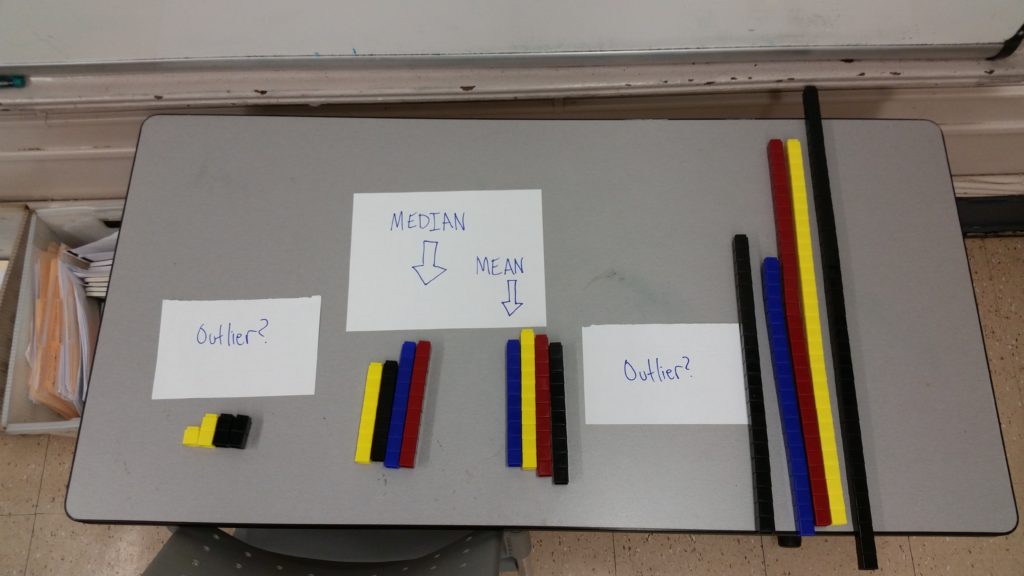So I was about to teach standard deviation today, and from the beginning of the unit I had planned to revamp this power point that I originally made sometime before 2010. Unfortunately the revamp didn’t happen, so I got a little flashback to what my teaching was like in the naughts, and it wasn’t pretty. I mean it wasn’t bad, it was a Powerpoint where I go step by step through what Standard Deviation was using an example comparing two sets. There are lots of discussion prompts that get at why standard deviation is useful. Here’s the file if you want to check it out. LINK TO CARL’S OLD SCHOOL POWERPOINT Because my day was busy, I had no choice to but teach it pretty much identically to how I taught it at that time.
Stepping back in time
Teaching this lesson was like taking a quantum leap back in time to my previous teacher self. As I was teaching it I realized that I had not built in a way to see if students really understood the reasoning behind the the calculations, there were a few students who answering the discussion prompts in the class, but the rest mostly stayed silent. I tried to think of a way to modify the lesson on the fly instead of just using the results on a worksheet where they practice finding the standard deviation. I thought up some different writing prompts that would be good ways to see if students understood why they were doing what they were doing, and I offered the class the following choice.
“Either do this worksheet, which asks you to calculate a lot of these giant standard deviations by hand…or answer some reflection questions that shows that you really understand standard deviation. Worksheet? Reflection questions? You pick!”
Would you believe that they picked the worksheet???
Why did they pick the worksheet!?!?
Having my reflection questions rejected was a pretty shocking occurrence in my classroom. One of those things that makes you suddenly question your whole approach in the middle of a class where you don’t have time to flesh the ideas out. Here are some of the things that ran through my head.
Should I let them choose? It wasn’t unanimous, the kids who were really into the lecture were the ones who were the ones who would write the reflection questions everybody else wanted the worksheet. Would allowing people to choose really result in everyone thinking about the ideas equally? (I said no)
What if they just didn’t get it? My first thought was that the pro-worksheet students might be students who may not have gotten much out of my Powerpoint, or any powerpoint in general. How many other times has an oversight on my part prevented a group of students from getting access to the big ideas.
Should I just do more practice? Should I allow students more opportunities to practice computations instead of asking them to describe big ideas? If I do, will math class turn into this thing that everyone hates (including me)?
How do I make reflection more natural? Students in the class need to be able to explain the ‘why’s’ behind all of the ideas in the class, so reflection should be though of as something as important as practice. Should I be doing more to change students thoughts about what math class is about?
Perhaps I am over thinking it. The fact that I had so much to think about made me glad that I am much more reflective teacher than I was when I originally made the worksheet. At the same time, I’m sure it’s unanswered questions like these that I need to reflect on if I want to keep getting better.


